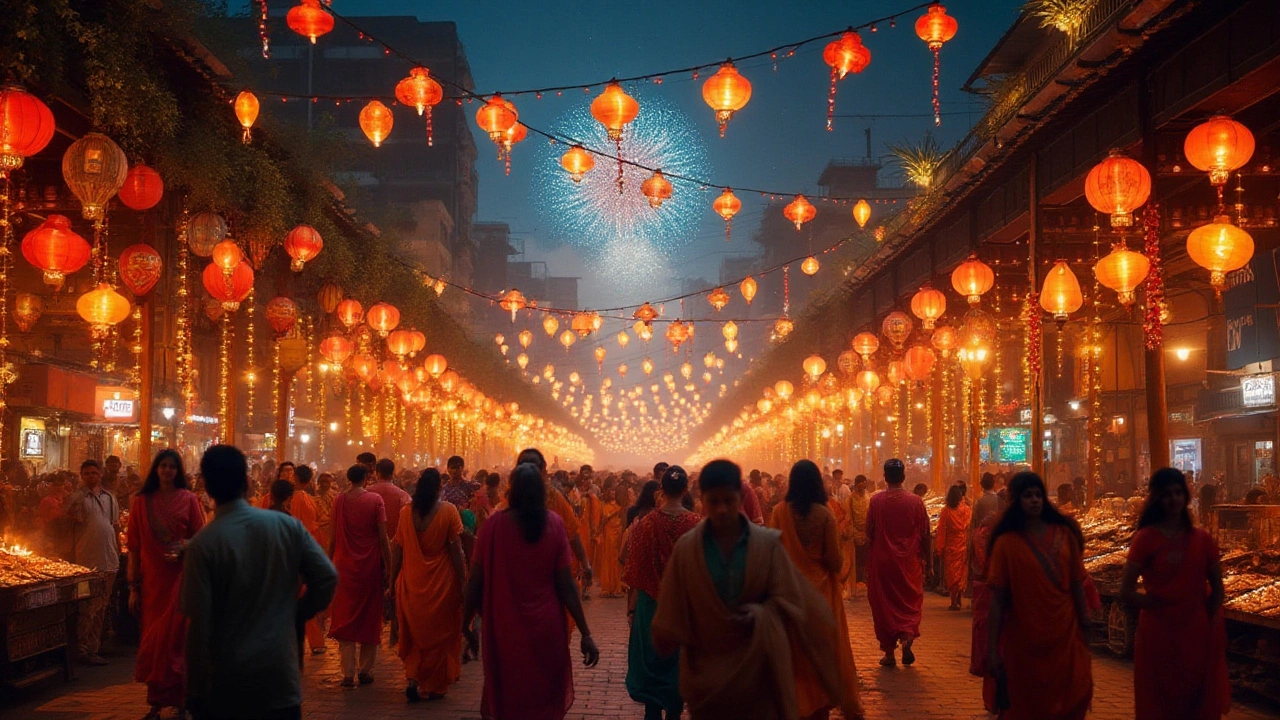Diwali in India: Celebrations, Traditions, and Travel Tips
When you think of Diwali, the five-day Hindu festival of lights that marks the triumph of good over darkness. Also known as Deepavali, it’s the most vibrant and widely celebrated event in India, turning cities, villages, and temples into glowing wonderlands. It’s not just a holiday — it’s a national reset. Homes are cleaned, new clothes are bought, sweets are shared, and millions light oil lamps to welcome prosperity. If you’re planning a trip to India, timing it around Diwali means you’ll see the country at its most alive — and most welcoming.
Diwali isn’t just one thing. In North India, it celebrates Lord Rama’s return to Ayodhya after 14 years in exile. In the South, it honors Lord Krishna’s victory over the demon Narakasura. In Gujarat, it marks the start of the new year. No matter where you are, you’ll see the same patterns: families gather, fireworks fill the sky, and streets buzz with energy. But here’s what travelers don’t always expect — Indian festivals, like Diwali, deeply influence how cities operate during the season. Many businesses close for days. Public transport slows down. Roads get crowded with people shopping for diyas, candles, and gifts. And while pollution spikes from fireworks, the warmth of the celebrations makes it unforgettable.
Traveling during Diwali means preparing for both magic and chaos. If you want to experience it fully, book accommodations early — hotels in Varanasi, Jaipur, or Udaipur fill up months ahead. Some jungle camps and nature retreats offer special Diwali packages with lantern-lit dinners and local storytelling. But if you’re looking for peace, avoid the biggest cities. Smaller towns like Rishikesh or Coorg give you the spirit without the crush. You’ll also want to know the etiquette: don’t wear black, avoid giving leather gifts, and never refuse a sweet. Locals will invite you in — say yes. You’ll be offered tea, snacks, and maybe even a tilak on your forehead. It’s not just tourism — it’s inclusion.
And while Diwali is rooted in Hindu tradition, it’s celebrated by Jains, Sikhs, and even some Buddhist communities across India. That’s why you’ll see it in Mumbai’s high-rises, Delhi’s old markets, and even remote tribal villages. The India cultural events, like Diwali, are not just rituals — they’re living expressions of identity, community, and hope. Whether you’re standing in a temple courtyard watching aarti or walking past a street vendor selling marigold garlands, you’re witnessing something deeper than decoration. You’re seeing how people hold onto joy, even in hard times.
Below, you’ll find real travel stories and practical guides about navigating India during Diwali — from where to see the best fireworks to how to stay safe in crowded markets. You’ll learn how to plan a trip that respects local customs, where to find quiet retreats amid the noise, and why some of the most meaningful moments happen when you step off the beaten path. This isn’t just a festival. It’s a doorway into the heart of India.
